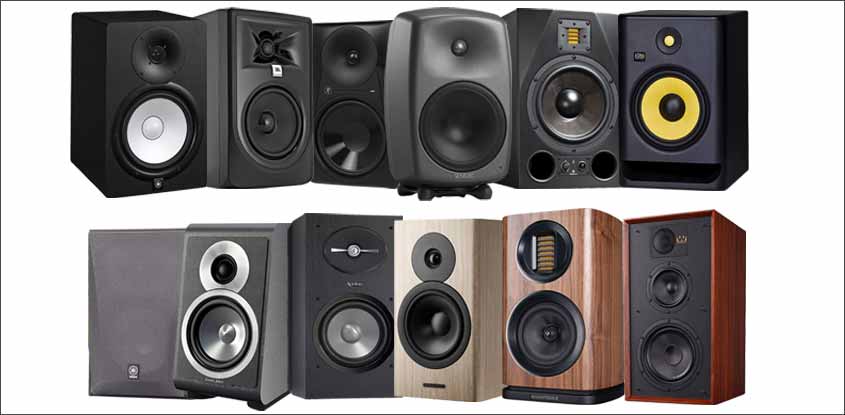Dedicated amps for each speaker driver
Most studio monitors contain separate dedicated amps for the woofers, the mid-range (on some models) and the tweeters. This design allows a powerful and more detailed audio reproduction. Having dedicated power amplifiers for each speaker also makes it easier to build top quality crossovers. The crossover can be placed before the power amps to reduce frequency overlap between the woofer, mid-range speaker, and tweeter, which results in a clearer, more detailed sound image.
Difference of purpose
Most music enthusiasts prefer speakers that seem to enhance or ‘colour’ their listening experience So hi-fi speakers enhance the low and high frequencies so that the listeners’ perception and impression is raised. But for a music professional, the sound they hear should be unaltered and true to what is present in recording and hide no imperfections. So, studio speakers are considered ‘neutral’ or ‘flat’ as they do not hype any frequency. They serve well for critical listening and may not be particularly suitable for music appreciation.
Connectivity options & signal type
Most hi-fi speakers will only have speaker wire posts or banana clip receptors for receiving audio signals. But studio monitors will feature XLR or TRS audio inputs for the same. Audio signal to a hi-fi speaker is considered ‘un-balanced’ and is prone for electromagnetic or radio interferences. But audio signals to a studio monitor is generally ‘balanced’ and will not get affected by any such interference.
Signal level differences
Pro audio equipment that is used in the studios are designed to send and receive signals that are about 12 dB greater than the signals used in consumer home audio and they work at +4 dBu. So, studio monitors can withstand very high levels of signal without distorting. On the other hand, consumer level home equipments work at -10 dBV and is designed to send and receive signals that are about 12 dB lower than the signals used in professional audio. Any higher level signal will most certainly distort a hi-fi speaker easily.
Near field & far field
Studio monitors are designed to be listened to at close proximity (near field) for accuracy. They are usually placed about 6 to 10 feet away from the listeners’ ears. Hi-fi speakers, on the other hand are designed mainly to be heard from larger distances (far field).
So, it will be a wise decision not to try and mix or master on consumer hi-fi speakers. Maybe it will sound good on your speakers but will completely sound different on any other pair. Also do not go for studio monitors that make your mixes sound particularly impressive. Rather look for studio monitors which sound ‘neutral’ so that they reveal all the flaws and mistakes in your recordings. If you can mix and make your music sounding great on your trusted studio monitors, the chances are that your music is going to sound great anywhere else!
In case you need more assistance in choosing the right pair of studio monitors, our expert sales team at Musicians Corner is always ready to help.


